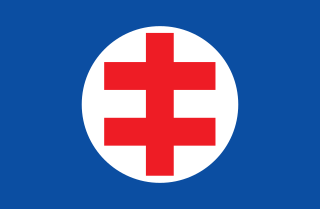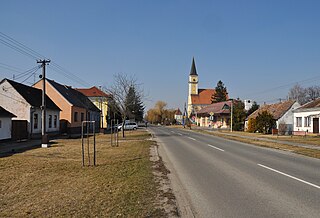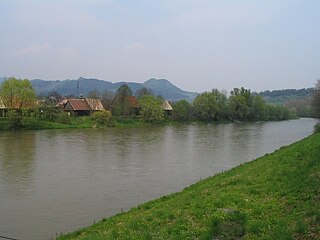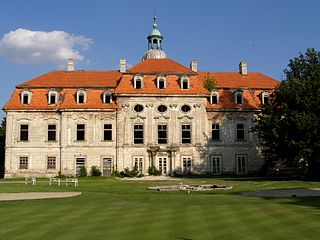
Freiwillige Schutzstaffel ('Voluntary Protection Corps', abbreviated FS) was a paramilitary organization in the World War II Slovak Republic. [1] FS was founded in late 1938. [2] Modelled on the German Sturmabteilung (SA) and the Allgemeine SS , FS organized members of the German community in Slovakia. [3] [4] [5] It functioned as the paramilitary wing of the German Party (DP). [5] [6] Walter Donath served as the national commander (Landesführer) of FS. [7] [8]
Two government regulations issued in 1939 provided the legal cover for FS; decree no. 240 issued September 27, 1939 and decree no. 311 issued December 21, 1939. [2] [9] Through the latter decree the Slovak government recognized FS and the German Youth (DJ) as paramilitary organizations operating in the frame of the German Party. [9] FS members were assigned to protect infrastructure (bridges, tunnels, railway stations) and persecuted deserters from the Polish front. [9] FS also sent fighters to take part in the German war effort against Poland. [10] Along with its Slovak counterpart, the Hlinka Guard, FS conducted attacks against the Jewish communities in Slovakia. [6]
As of March 1939 FS was organized into three Sturmbannen ('Strike Battalions'). [2] The title of the commander of a Sturmbann was Sturmbannführer ('Strike Battalion Leader'). [11] The geographic area covered by a Sturmbann corresponded to the territorial units of the German Party: Pressburg (Bratislava), Kremnitz-Deutsch Proben (Kremnica - Nemecké Pravno) and Zips. [2] At this point FS had 4,604 members. [2] At the time of its foundation FS membership was open to ethnic German males aged 18-35, who could provide proof of Aryan lineage three generations back. [2] In June 1941 membership was opened up to party members up to the age of 50. [2] The uniform of FS was largely identical to that of Allgemeine SS. [5] Its symbol was an eagle carrying a shield with a swastika (the shield with swastika was the symbol of the German Party). [5]
On February 15, 1940 the number of Sturmbannen was increased to six; [4] [12]
- I. - Pressburg (urban), Commander Hans Hofstäter, 3 companies
- II. - Pressburg (rural), Commander Zoltan Absalon, 4 companies
- III. - Kremnitz, Commander Jozef Jacklin, 7 companies
- IV. - Deutsch Proben, Commander Ladislav Wässerle, 4 companies
- V. - Oberzips, Commander Willi Kunzmann, 6 companies
- VI. - Unterzips, Commander Hans Dolinsky, 4 companies. [2] [13]
However, the six Sturmbannen did not cover all of the FS membership. In areas with small German populations, FS members adhered directly to the national headquarters of FS. [2] At this point FS had 4,622 members. [2] [12] As of early 1941 FS membership stood at around 5,500, by October 1941 it stood at 6,810. [2] [4] FS was again reorganized on September 14, 1942 with the creation of a seventh Sturmbann in Považie. [2] From that point onwards all FS members were included into a Sturmbann. [2]
FS participated, along with the Hlinka Guard, in the deportation of Jews from Slovakia in 1942. [3] [14]
Not all FS members were in active military service, by late 1942 5,832 out of 7,646 FS members were in active service. [2] And whilst membership in FS continued to increase throughout the war (7,818 in mid-1944), the percentage of FS members in active service declined (4,179 in mid-1944). [2] The decline was a result of recruitment into Waffen-SS. [2] In this process the German Party leadership gradually lost some of its influence over FS, as the organization became increasingly subordinated to SS. [2] In 1943 Donath left his post as FS commander to fight on the Eastern Front. [7] [9] F. Klug, hitherto leader of the German Youth organization, was named the new FS commander. [9]
Again in 1944 FS participated in deportations of Jews from Slovakia. [2]














